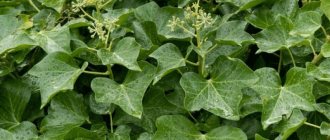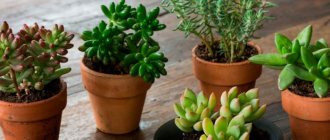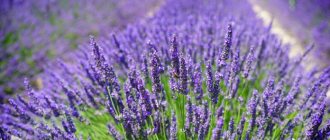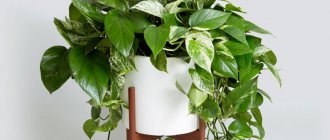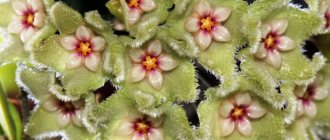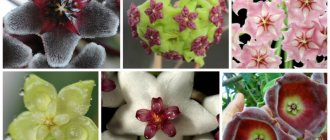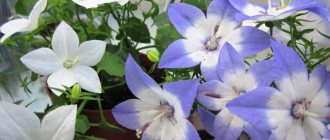Description of the plant
Indoor ivy (Hedera) is a creeping, evergreen, perennial plant of the Northern Hemisphere from the Araliaceae family. The name Hedera was assigned to the plant in Ancient Rome and was transferred without change by Carl Linnaeus to botanical dictionaries.
In nature, there are about 15 varieties of domestic ivy, almost all of them are cultivated and used in temperate and subtropical countries as garden and indoor plants.
The shape and color of the foliage depend not only on the species, but also on the properties of the branches. So, on one shrub “flowering” and “non-flowering” branches sprout. Flowering branches have leaves in the shape of elongated ovals of pale green color. But those that do not bloom are covered with dark green spatulate leaves.
Outdoor ivy blooms profusely with small flowers collected in clusters. After flowering, a fruit is formed in the form of a small black berry, which contains seeds. Flowering is not typical for indoor ivy.
House ivy has been used in everyday life since ancient times. The ancient Greeks, and later the Romans, associated this plant with the god Bacchus, so they made wreaths and decorations from ivy, calling for love and fun.
Ivy was also used as a medicinal plant in folk medicine. It is believed that tinctures and decoctions from this plant have anti-inflammatory and antibacterial effects. They help with diseases of the genitourinary system, as well as with various types of respiratory diseases.
Science does not confirm these properties of ivy, but studies have shown that the plant is capable of absorbing carbon dioxide, toxins and exhaust in large volumes.
Positive signs about ivy
- Ivy is a strong source of peace. Since green twigs collect strong energy, they can “absorb” harmful negativity left after quarrels.
- The plant discourages evil people who often visit you, and also cleanses the atmosphere of the house from evil thoughts left by these guests.
- Ivy “works” very well when growing near a work computer in an office. Wise people advise keeping it in the office (especially if you have a particularly harmful, loud boss or are trying to build a career).
- If a girl dreams of a family, but still can’t get along with “that” guy, “grandmothers” advise buying bindweed. It is believed that he can help her not only interest her, but also win the heart of her beloved, or finally meet her destiny.
- If the hedera is planted by a married lady, the plant will become a shield from family quarrels.
- In addition, the plant is recommended as a panacea for insecurity. Are you too timid, quiet person? Try to make friends with ivy - and maybe, when its “vines” begin to entwine one of the walls in your home, you yourself will begin to “rise” high in this life.
- If you plant a plant not in the house, but on the street (say, on the balcony, but so that the branches wrap around the balcony door and window), you will create a reliable shield that protects your home from any energetic evil coming from outside.
Types, varieties with photos
Canary house ivy / Hedera Canariensis
Mature ivies of this species have bright red stems. The leaves grow up to ten centimeters in length. The foliage color is green, framed by a white border along the edge of the leaf blade.
Common Ivy / English Ivy / Hedera helix
One of the most popular types of home ivy. Used as an ampel plant, or for vertical gardening on supports.
In outdoor conditions it blooms and produces inedible dark lilac berries. The color and shape of the foliage depend on the variety.
Varieties:
- Ivalace;
- Eve;
- Sagittaefolia;
- Harald.
Colchian ivy / Hedera Colchica
This species is characterized by large (25 centimeters) foliage with an unusual texture. The outer part of the leaf plate is perfectly smooth, and the inner part is velvety. Varietal ivies of this species present a varied color palette of foliage and its shape.
Varieties:
- Dentata Variegata;
- Arborescens;
- Sulfur Heart.
Ivy Fatshedera Lise / Hedera Fatshedera
Variegated ivy, the leaves of which combine bright green and white spots spread over the surface of the outer and inner sides of the leaf blade.
Is it possible to buy ivy seeds
Hedera helix mix or common ivy - home care
There are many varieties of ivy available in botanical stores. The simple forms that this graceful plant takes can be used to decorate walls, fences, as well as roofs and trees.
Note! The most common are: Baltic, graceful, winter, miniature, etc.
There are also differences in physical properties among species. That is, one or another variety of ivy likes coolness more and vice versa. Some grow better in the cool season, others in the warm season. In addition, a certain type has a certain leaf shape: round, pointed, and also oval.
Home care
Lighting
The plant prefers to grow in partial shade or diffused light. Direct sunlight adversely affects the color of foliage and can cause blotchy burns.
Temperature
Ivy prefers average temperatures in the range of 15-25 degrees Celsius. The plant loves fresh, warm air and tolerates ventilation with a slight draft.
Watering and humidity
Water home ivy with settled water at room temperature. The frequency of watering depends on the air temperature and the rate of drying of the top soil layer in the pot. The plant does not like overflow.
Ivy's lush foliage collects dust and toxins, so it needs to be wiped down with a damp sponge or washed completely in the shower every couple of weeks. Loves home ivy and spraying from a spray bottle.
Priming
Any universal slightly acidic earth mixture is suitable for growing ivy. Additionally, a small amount of peat and river sand can be mixed into the soil. A mandatory requirement for ivy is a good drainage layer. The container for ivy roots should be deep and high, but not wide.
Fertilizers
To feed home ivy, use universal liquid mixtures for deciduous plants. In the warm season, fertilizers are applied intensively once every two weeks. In winter, one feeding per month is enough.
Transfer
The frequency of transplants depends on the age of the plant and, accordingly, the intensity of development of its root system. Ivy trees aged from 1 to 5 years require an increase in “living space” every year.
More mature plants are replanted “on demand” when the roots begin to emerge through the drainage slits.
The roots of ivy, which has celebrated its tenth anniversary, practically stop growing, so there is no need to replant the plant; it is enough to simply update the top layer of the substrate once a year.
The transplantation procedure is carried out using the transshipment method so as not to damage the roots of the plant.
Trimming
The stems of house ivy grow very quickly. To preserve its decorative forms, the plant must be regularly pruned, thinned and pinched. Trimmings can be used to propagate and rejuvenate ivy.
After the pruning procedure, the sections must be treated with crushed charcoal.
How to replant ivy
The plant is replanted in several cases:
- if roots protruding from the pot become noticeable;
- if growth and development have stopped.
How does Hoya or indoor wax ivy bloom?
In addition, it is possible, without paying attention to all these factors, to replant young shoots annually. For perennial shoots, it is enough just to change the top layer of soil in the pot with freshly prepared one.
Note! The approximate composition should be as follows: leaf, peat, turf types of soil along with sand in equal proportions.
The most preferable time to plant a flower is spring, namely March-April. This is very important, since planting ivy in a pot correctly is not at all easy. The container size should be approximately a couple of centimeters larger than the previously used one. Then you need to pour a copious amount of water onto the root soil to form a lump. Next, carefully grab the stem and drag it into a new pot. Sprinkle with new soil, leaving a little space around the edges for water to drain. The last step is to water the plant and spray its leaves and stem.
Important! It is best to keep a newly transplanted flower away from drafts and also away from direct sunlight.
Propagation of indoor ivy
Cuttings
After pruning the ivy, a lot of material remains that can be used as cuttings for propagation.
For planting, stems 10-15 centimeters long with leaves are suitable. The cuttings are placed in water until the first roots appear. The petioles with roots are placed in a container with damp sand and covered with film. After a couple of months, the cuttings will take root well and can be planted in separate pots.
By shoots
If long and massive shoots were removed during pruning, they can be carefully cut with a blade into several separate parts. These vines are also first placed in water and, after the first signs of roots appear, in damp sand. After 2 months they are planted in good soil, in a personal container.
By layering
Containers with a damp mixture of soil and peat are placed next to the pot with the mother plant. Conveniently located stems are bent from the main ivy and secured in the center of the container with the peat mixture. The place where the stem comes into contact with the ground is sprinkled with earth, watered abundantly and covered with film. After the cuttings have taken root, they can be separated and planted in a separate pot.
How does ivy reproduce?
There are two ways to propagate ivy, or hedera, as it is also called:
Cuttings
Hedera helix - what an ivy plant looks like
This type of propagation is quite practical because, according to botanists, it guarantees almost 100% results.
To do this, you need to do several procedures:
- Cut the cuttings and plant them in a prepared pot with soil. Particular attention should be paid to the quality of the land. It should be crumbly, without any debris or stones.
- Next, you need to prepare the soil in a separate container. You'll need it later. It must be cleared of debris, impurities, and also made loose and not dry. According to the advice of many summer residents, the best soil for ivy is deciduous soil with sand.
Note! The first condition for transplantation is the presence of roots on the cuttings. This will allow the plant to quickly get used to the new soil.
After all the above has been done, the cuttings should take root. Proper care and timely watering of the soil is also very important. Propagation of ivy by cuttings is common among both experienced gardeners and novice amateurs.
Propagation of hedera by cuttings
Shoots, or how to grow ivy from a shoot
This type of propagation requires a little more effort. There is a possibility that this method of transplantation will not be successful, since this will require a little experience and skill. How to do it right:
- To replant, you will need a shoot with about 10 leaves on its trunk.
- It is necessary to carefully press the shoot into the previously prepared sand so that only leaves are visible on the surface, and the shoot itself goes underground.
- After 10 days, roots should emerge from the buds from the leaves that are underground.
- You should dig a shoot out of the ground and cut it so that each of the cuttings has a leaf and a root.
- Next, planting occurs in the same way as with cuttings.
Pronounced shoots on the stem
By layering
The third method is as practical and convenient as the first. It is called propagation by layering. To do this you need to proceed as follows:
- Choose the longest shoots.
- Make about three cuts on each. Next, attach it to the ground with special botanical clothespins (this process is called rooting).
- Within 24 hours, roots should appear at the incision sites. After this, you should carefully separate the cuttings from each other and safely replant them in different places.
How to root cuttings
How to propagate indoor ivy
Ivy is an outdoor plant that is weather tolerant. He has a large number of brothers. One of them is indoor ivy. The plant is identical in all parameters and dimensions to common ivy. A branched stem with numerous leaves will decorate the window sill and easily turn the balcony into a jungle.
Indoor ivy: can you keep it at home?
The question is controversial. It is very important to spend a lot of time watering, replanting, and trimming leaves. Then you can safely plant it in pots and place it on window sills. Reproduction methods are the same as for the outdoor species.
Diseases, problems, pests and treatment
Indoor ivy is a disease-resistant and unpretentious plant. However, neglecting the rules of care can lead to loss of decorative appearance - fading of the color of the foliage, its yellowing and falling off; lack of variegated color. Most of these problems are the result of excessive watering or abuse of fertilizers.
Pests rarely target indoor ivy, but gardeners may encounter thrips, aphids, scale insects or spider mites. Ivy will easily tolerate treatment with insecticides, as well as soap solution or garlic tincture. Therefore, ridding the plant of parasites will not be difficult.
Popular types of ivy
Common ivy or Hedera, which means hanging plant, belongs to the Heder class. The homeland of lianas is the subtropics of the African continent. To make it easier for the plant to hold luxurious foliage, it easily entwines any support and is firmly held on it. This ability is used for decorative purposes, creating supports in different configurations or braiding a vine onto the walls of a building, fences, or gazebos.
If you control the development of ivy and provide appropriate care, it will help create an original, stylish interior. The main, commonly found types of ivy:
- the common loach quickly clings to everything that is nearby;
- the Lise variety is popular among gardeners due to the bright, unusual color of its large palmate leaves;
- Canary ivy is distinguished by variegated leaves of a dense structure.
Features of seasonal care
Indoor ivy continues to grow throughout the year. But the active growing season occurs in spring and summer. The plant needs to be provided with a temperature of +22..25 degrees, regular watering (the soil should remain moist all the time), fertilizing once every 2 weeks.
In winter, it is better to provide the plant with rest. Reduce the air temperature to +12..14 degrees. Reduce watering, allowing the soil on top to dry. There is no need to feed ivy during the dormant period. But if the hedera winters in a warm place, then caring for it remains the same as in the summer.
Use for decorative purposes
The northern part of Europe, the birthplace of indoor ivy, has long been famous for the cultivation of this plant. Ivy grows very quickly. Therefore, to form or maintain a certain shape, it is pruned.
The plant can be completely woven around a window, ceiling, walls, or formed into a weeping tree. Modern business life is fast-paced. There is a place for stress and emotional tension. They are easily removed by ivy. Therefore, such a houseplant often decorates office spaces.
Medicinal use
Since ancient times, the medicinal properties of this plant have been valued. Currently, ivy leaves are widely used in many antitussive drugs. Such medications are taken to treat colds, whooping cough, bronchitis and asthma.
The homeland of indoor ivy was famous for its folk healers. They used leaf tinctures as an astringent, antiemetic and laxative. Prepared decoctions help treat headaches, sclerosis, rheumatism, gout, liver, gall and bladder. They treat tuberculosis and rickets. For external use, ointments are prepared that can be used to reduce calluses, warts and wen. The leaves are collected just before flowering. During this period they contain more useful substances. After collection, they are dried in air or in a dryer. After which the leaves can be stored for up to four years.
How to care for ivy?
Watering . In summer, water the plant deeply, but too much watering can cause the ivy leaves to turn yellow. In winter, less water is required for irrigation, but you should not bring the earthen ball to dryness.
Pinching . From time to time, the ends of the ivy stems are pinched to allow side shoots to grow. The cut off tops are used as cuttings. Be sure to remove green shoots that sometimes appear on plants with variegated leaves.
Ivy © arboretum.ie
Temperature . Moderate to cool, no more than 16°C at night, winter minimum recommended 12°C. In warm and especially dry rooms, ivy is often affected by scale insects. However, with regular spraying, it will overwinter well even at normal room temperature.
Lighting . Ivy does not tolerate direct sunlight, but (especially variegated forms) prefers a well-lit place, and does not like changes in location in relation to the light source. Green ivy varieties can be classified as shade-tolerant, but it is still advisable to provide them with a bright place. In winter they require a brighter location than in summer.
Fertilizer . From March to August they are fed with complex fertilizer for decorative deciduous indoor plants. Feeding is carried out every two weeks. Ivy plants respond well to feeding with mullein infusion. However, such frequent feeding leads to the fact that their leaves become very large and the plants lose their decorative appeal.
Humidity : Ivy loves moist air. Requires frequent spraying in summer, and also in winter if it is in a warm room. If this is possible, then periodically he is given a shower.
Ivy is replanted in the spring: young plants - annually, adults - every other year into pots of larger diameter.
Why doesn’t it bloom, what should I do?
Here are some of the possible problems, their symptoms and solutions.
If the leaves turn yellow, the reasons may be excess moisture or fertilizer.
Advice: reduce watering and prevent the plant from overcooling. Make sure that the water for irrigation is soft and its temperature is room temperature or slightly higher. Adjust the amount of fertilizer in the soil. The plant may need to be replanted.
The variegated plant's patterns have disappeared or become very pale. Reason: ivy does not have enough light. The easiest way is to move it to a more illuminated place, but in some cases it is recommended to install a special lamp.
The leaves are too sparse, the stems appear “bald”. The plant does not have enough light. Sometimes it may be due to unsuitable soil composition.
The tips of the leaves become dry and brown. Insufficient watering regime, often combined with too dry air and high room temperature.
What to do? Start spraying the plant frequently. Gradually increase watering. Move the flower to a cooler room or adjust the air temperature.
What types of ivies are there?
Ivy is a genus of plants in the Araliaceae family, order Umbelliferae.
There are just over one and a half dozen species of ivy in the world. Some of them are rare Red Book species or endemics that you cannot buy in a store, others are not suitable for our climate (for example, they grow only in hot subtropics or require constant high air humidity), while others have taken root quite well in average Russian gardens.
All ivies are perennial creeping shrub vines that “move” by clinging with their adventitious roots to walls, tree trunks, etc. Contrary to popular belief, ivy does not destroy its support by “drilling its roots into it,” but only clings to it with special suction cups , looking for all the cracks and irregularities.
It has been proven that a dense canopy of ivy, on the contrary, can protect walls and masonry, acting as a shield from sudden changes in temperature and pollution.
Ivy leaves are usually green, on long petioles, often dense, leathery, shiny, and come in two types (depending on whether they grow on a sterile or fruit-bearing shoot) - angular-lobed and whole, ovoid or heart-shaped. Depending on the type and variety of ivy, the leaves can be of different lengths and widths, as well as vary in the shape and size of the blades.
Greenish flowers, although not single, but collected in inflorescences-corymbs or racemes, are usually very inconspicuous and inconspicuous, and small fruits and berries can be black or yellow. Ivy is pollinated by insects and is an excellent honey plant. It is interesting that some ivy, unlike most crops, can bloom not only in spring, but also in autumn, and the berries will then ripen in January-February or next spring - however, in our conditions, garden ivy may not bloom at all.
Leaves, shoots and fruits of all types of ivy are slightly poisonous (contain saponin).
In the horticultural culture of our regions of the central zone, the most common varieties and varieties of common ivy are sometimes grown : Pastukhov , Caucasian and Colchis . In indoor culture, when certain conditions are created, or in more southern regions in open ground, more heat-loving types of ivy can be grown - for example, Canary or Irish .
